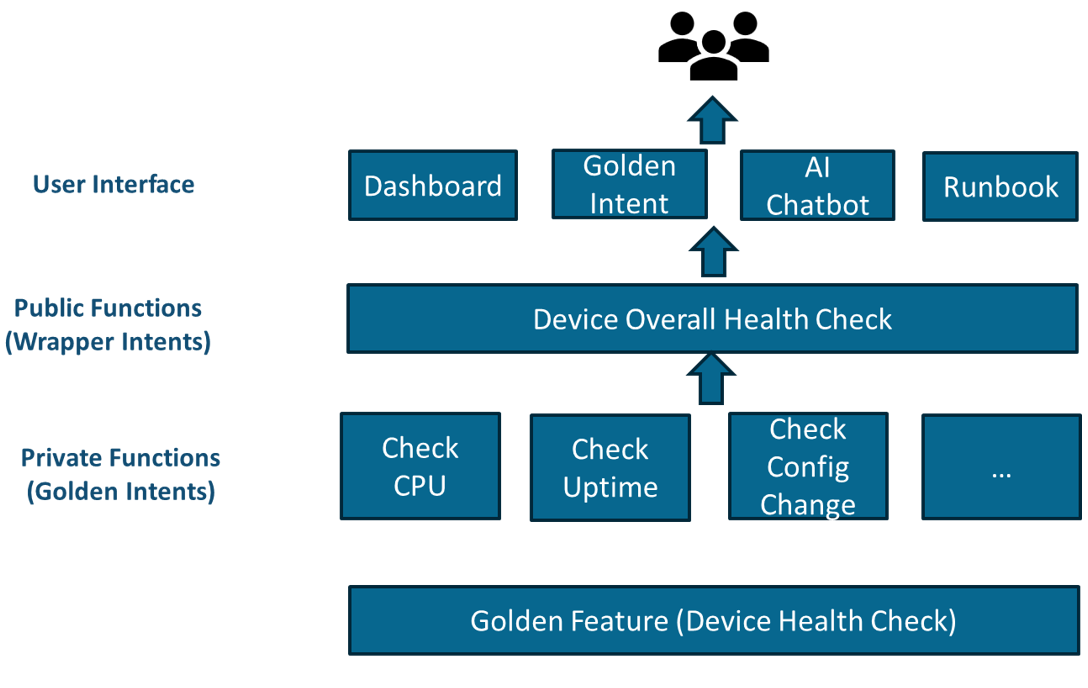R12.1-JA-2025June05
Automated Troubleshooting
The intent-based automation can greatly shorten the MTTR of a ticket when it is integrated into the workflow. Triggered automation is executed without human interaction whenever a ticket is passed from the ticket system. Depending on the automation results, the following actions can be taken:

- Auto-Close the ticket if the automation detects that the symptom of the ticket does not exist anymore.
- Auto-Remediate the ticket if the ticket issue is well-known and there exists a solution to solve this issue.
-
Need further diagnosis. Different users at different levels may run additional intents to troubleshoot the problem. A power user may create a new intent for this issue. The Intent Dashboards from these intents can be added to an Observability Dashboard for this ticket to collaborate with the troubleshooting process. The final output of the collaborative workflow is the Observability Dashboard, with each row as a diagnosis activity and each column as a device.

The individual intents can be grouped to troubleshoot a problem. One way to do this is to create a wrapper intent, which includes all relevant intents as the follow-up intents as a public interface for the end users so that any change of underlined intent will not change the end-user interfaces. A wrapper intent can be used by Dashboard, AI-Bot, and Runbook.
